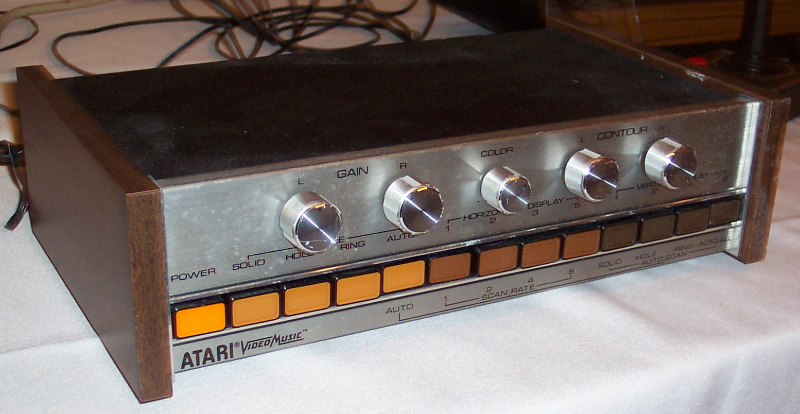
Music visualization, a feature found in electronic music visualizers and media player software, generates animated imagery based on a piece of music. The imagery is usually generated and rendered in real time and synchronized with the music as it is played.
Visualization techniques range from simple ones (e.g., a simulation of an oscilloscope display) to elaborate ones, which often include a plurality of composited effects. The changes in the music's loudness andfrequency spectrum are among the properties used as input to the visualization.

History
The first electronic music visualizer was the Atari Video Music introduced by Atari Inc. in 1976, and designed by the initiator of the home version of Pong, Robert Brown. The idea was to create a visual exploration that could be implemented into a Hi-Fi stereo system.
Music and audio players were available on early home computers, Sound to Light Generator (1985, Infinite Software) used the ZX Spectrum's cassette player for example.[1] The 1984 movie Electric Dreams prominently made use of one, although as a pre-generated effect, rather than calculated in real-time. One of the first modern music visualization programs was the open-source, multi-platformCthugha (1994). Subsequently, computer music visualisation became widespread in the mid to late 1990s as applications such as Winamp (1997), Audion (1999), and SoundJam (2000). By 1999, there were several dozen freeware non-trivial music visualizers in distribution.
In particular, MilkDrop by Ryan Geiss, G-Force by Andy O'Meara, and Advanced Visualization Studio (AVS) by Nullsoft became popular music visualizations. AVS is part of Winamp and has been recently open-sourced, and G-Force was licensed for use in iTunes[2] and Windows Media Center[citation needed] and is presently the flagship product for Andy O'Meara's software startup company,SoundSpectrum. More recently NoiseCradle has made it possible to incorporate videos and live webcam feeds into music visualizations. The real distinction between music visualization programs such as Geiss' MilkDrop and other forms of music visualization such as music videos or a laser lighting display is the visualization programs' ability to create different visualizations for each song every time the program is run.
Wikipedia
No comments:
Post a Comment